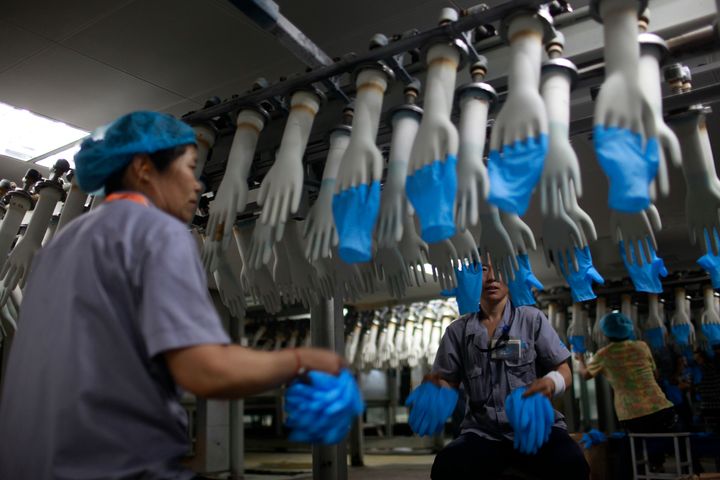
Automation will further widen the divide between men and women in the workplace, with more women than men at risk of seeing their jobs displaced, according to a new report from the World Economic Forum.
Released at Davos ― the annual gathering of politicians and business leaders ― the report analyzed nearly 1,000 jobs across the U.S. economy, and its conclusions are bleak.
A predicted 1.4 million U.S. jobs will be at risk from technology and other factors between now and 2026. A shocking 57 percent of these are jobs currently performed by women. It’s yet more bad news for women who are already dealing with a growing gender gap and facing a 217-year wait to have the same job and wage opportunities as men.
While much emphasis has been put on the threat automation poses to men, especially due to the decline in manufacturing jobs, WEF argues this has skewed the view of automation from a gender perspective.
“The narrative tends to focus on male, blue-collar factory workers, for example,” Saadia Zahidi, head of education, gender and work at WEF, told HuffPost. “But there are also a number of very female-dominated roles like secretaries and administrative assistants that are facing displacement.”
Nearly 164,000 female secretaries are at risk, according to the report, compared with 90,000 at-risk male assembly line workers.
Automation is not some distant prospect, of course. It’s already happening, and not just on factory lines and in administrative roles. Robots are expanding into the service sector too. They are already running hotels and delivering take out.
Amazon has just opened the doors of Amazon Go in Seattle, a cashier-less grocery store that uses apps and high-tech sensors to track shoppers and their purchases.

While there are no confirmed plans for a national rollout of the stores yet, this development poses a potential threat to retail jobs. Retail salespeople and cashiers are the top two most common U.S. jobs, employing 7.8 million people collectively. Nearly 74 percent of cashiers are female.
Reskilling is the answer to these tectonic shifts in the job market, according to the report, which says learning new skills will increase workers’ chances of re-employment, likely lead to wage increases and improve their social mobility prospects.
Retraining has the potential to tackle the gender gap too, said Zahidi: “If we took a very deliberate approach to reskilling in which we tried to ensure some of these gender gaps were closed, we’re actually sitting on an opportunity where we can actually accelerate gender parity.”
While the study focused on the U.S. economy, a similar story is unfolding across the world. Emerging economies in Southeast Asia, for example, rely on labor-intensive manufacturing like the garment industry, where women make up the majority of workers. In Cambodia, for example, as many as 88 percent of garment workers ― 81 percent of whom are women ― face displacement through automation, according to an International Labour Organization report.
“Worryingly, many of these female workers come from rural areas and are breadwinners of their families,” said Jae-Hee Chang, co-author of the report.

“Our study showed that technology would impact vulnerable groups of society the most: low-skilled, women, youth and less educated,” Chang said. She called on policymakers to urgently consider what automation will mean for workers and how to ensure they have the skills and education to move into other jobs, for example in retail and tourism
Education is vital, agreed Johannes Moenius, chair of the Institute for Spatial Economic Analysis, which released a report last year mapping out who would be hit hardest from automation.
“It’s absolutely key that people are aware that we have entered a time where continuous education, lifelong education is not just political lip service... it’s a requirement for people simply to earn a living,” he told HuffPost.
For more content and to be part of the “This New World” community, join our Facebook Group.
HuffPost’s “This New World” series is funded by Partners for a New Economy and the Kendeda Fund. All content is editorially independent, with no influence or input from the foundations. If you’d like to contribute a post to the editorial series, send an email to thisnewworld@huffpost.com
